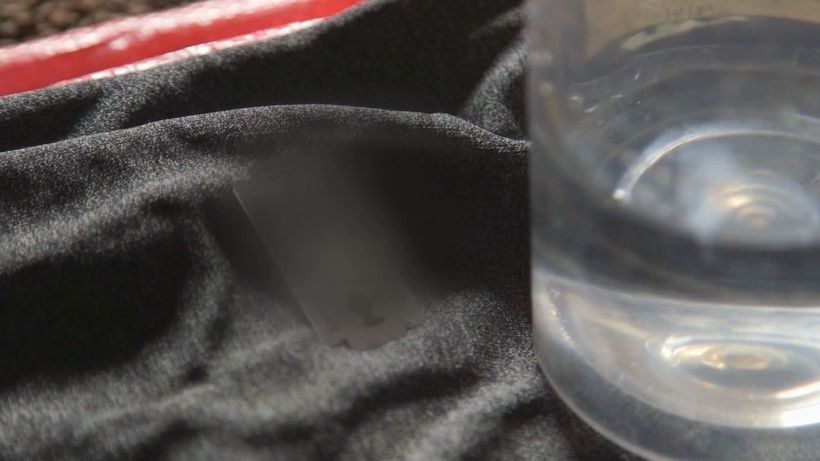Story highlights
A new paper suggests allowing a minimized "nick" to fight more extreme female genital mutilation
Critics say the idea won't work and that "not all cultural traditions deserve respect"
In 1996, doctors at the Harborview Medical Center in Seattle decided to offer its Somali patient population what was characterized at the time as a “ritual nick” to adolescent girls, as a way to avoid a much more extreme procedure.
The doctors carried out the medical compromise in the face of what they considered a stark reality: If an alternative procedure wasn’t offered in the United States, the girls would likely be taken back to Somalia for a more extensive procedure, a horrifying form of female circumcision, also known as female genital mutilation or FGM. The more commonly practiced infibulation involved excising the clitoris, labia minora and majora, followed by stitching to close up most of the vagina.
With the “ritual nick,” girls gave their consent and a partnership was forged with the Somali community.
This anecdote is relayed in a paper, “Female genital alteration: a compromise solution,” published Monday in the Journal of Medical Ethics. The authors, American OB-GYNs Kavita Shah Arora and Allan J. Jacobs, argue that the experience at Harborview was an example of “utilitarian considerations.”
Years of advocacy and legislation against FGM have done little to curtail the practice, that much is clear. At least 200 million women and girls in 30 countries now live with female genital mutilation, according to a UNICEF report published this month. That means 70 million more victims than previously thought have undergone the “violent practice,” the report said.
Arora and Jacobs argue that, in fact, anti-FGM campaigns are viewed as culturally insensitive, racist and simplistic, often serving to drive the practice underground and exacerbate the health implications.
But the suggested solution – allowing a “nick” and calling it “female genital alteration,” rather than outlawing the procedures entirely – is stirring controversy.
Responses to the paper argue that “not all cultural traditions deserve respect” and that children have a right to genital autonomy.
“There is no doubt that in whatever form, FGA has its origin and purpose in controlling women,” Ruth Macklin, a bioethicist at the Albert Einstein College of Medicine, wrote in her response.
In another commentary, Brian Earp, a visiting scholar at the Hastings Center Bioethics Research Institute, said that changing laws to allow “minor” forms of female genital alteration would be “a fiasco” that raises questions of who could monitor and regulate such procedures.
The view from the ‘cutting room’
In Kenya last year, I visited what’s colloquially known as a “cutting room,” where mother and daughter practitioners used cloth ties and ethanol to genitally mutilate little girls.
As the United Kingdom weighed legislation that mandated reporting if a girl was believed to be vulnerable to possible FGM, we wanted to show what happened in these out-of-the-way houses. What we found when we got there was an uneven, packed earth floor with filthy restraining ties wrapped on pegs hammered into the ground.
Many of the victims were the children of emigrants who had gone to Europe and America, brought back to their home countries to be “cut” far from the eyes of authorities. FGM is illegal in Kenya, but that had only further increased the risks the parents willingly took. Girls are left at home to bleed, risking further infection, rather than taken to hospitals where any doctor or nurse would immediately recognize the procedure.
The mother and daughter practitioner team were themselves victims of FGM, but in spite of the trauma they suffered, they still believe this is the only way to preserve girls’ “honor.” They told me “the suffering keeps the girls pure.”
Comparison to male circumcision
The authors stress that they don’t condone the more extreme forms of FGM, such as full excision. But they say any liberal Western culture that tolerates male circumcision must condone the forms of female circumcision that cause no lasting harm. These, they believe, are similar to aesthetic alterations.
But that’s to ignore the reality that all forms of FGM are rooted in the control of female sexuality. Male circumcision has its roots in cultural and religious practices involved in enforcing cleanliness, practices that have since been validated by the World Health Organization and the American Academy of Pediatrics.
But would the authors’ “utilitarian” alternative make a difference?
A history of failure
The practice of “ritual nicking” is not new. In some countries, it’s known as “Pharaonic,” in contrast with “Sunna,” the more extreme version.
I’m from Sudan and in my mother’s generation, the Pharaonic version of FGM, the “ritual nicking,” was reintroduced in Egypt and Sudan. It was an attempt to shield girls from the shame of being uncircumcised – and therefore unmarriageable – while protecting them from the horrors in childbirth the more extreme version engenders.
It failed. The extreme version is still happening.
Join the conversation
There are no official data for FGM in Sudan because it is considered taboo to speak openly about anything sexual; all of the community-level FGM activists I interviewed refused to be identified by name. All of them agreed, though, that it’s the mentality behind enforced submission to norms of purity that needs to change – not the means of the enforcement.
The authors argue that the best way to protect female children is to adopt the term “female genital alteration” and a more nuanced position on cultural practices – one that’s not associated with long-term medical risks and that they say does not violate human rights.
But among those I spoke to, those who had suffered through the procedure, there’s worry that it will only legitimize the thinking behind FGM. As long as that continues, FGM will flourish and mutate.








